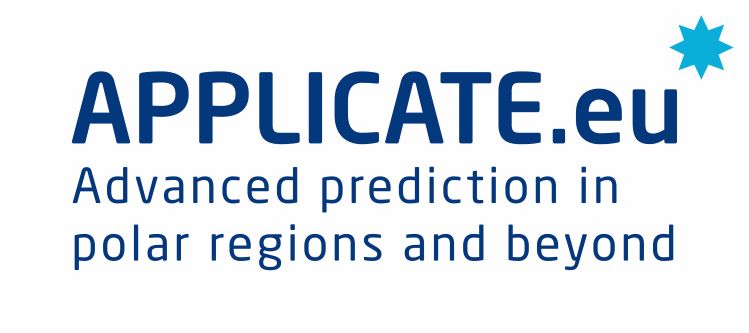Projects
The overall objective of INTAROS is to develop an integrated Arctic Observation System (iAOS) by extending, improving and unifying existing systems in the different regions of the Arctic. INTAROS will have a strong multidisciplinary focus, with tools for integration of data from atmosphere, ocean, cryosphere and terrestrial sciences, provided by institutions in Europe, North...
Arctic climate change increases the need of a growing number of stakeholders for trustworthy weather and climatepredictions, both within the Arctic and beyond. APPLICATE will address this challenge and develop enhanced predictivecapacity by bringing together scientists from academia, research institutions and operational prediction centres, includingexperts in weather and...
Its general objective is to develop software and tools to access relevant data from the Copernicus Climate Data Store or other sources, to apply metrics for evaluation of climate change projections, to compute statistics and time series as well as tailored information to user needs. The access to this climate information will be through a web interface. The idea is to extend...
QA4Seas (Quality Assurance for Multi-model Seasonal Forecast Products) aims at developing a strategy for the evaluation and quality control (EQC) of the multi-model seasonal forecasts provided by the Copernicus Climate Change Service (C3S) to respond to the needs identified among a wide range of stakeholders. The quality assessment will be user driven and will put at work the...
The World Meteorological Organization (WMO) sponsored the Global Framework on Climate Services (GFCS) where the need for actionable climate information for periods from several months up to several years for economic, industrial and political planning has been expressed. However, progress in seasonal forecasting has been slow and decadal forecasting is still incipient. At the...
Producing trustworthy interannual to decadal climate predictions constitutes a societal challenge with numerous socio-economic applications (agriculture, energy, health, water resources, insurance). Climate is, for example, one of the key factors that influences grape and wine production affecting the suitability of certain grape varieties to a particular region as well as...
C3S project that aims to develop climate indicators that can be useful for the energy industry. It will bring together the complementary expertise of 7 climate research and service centers and 10 energy practitioners to demonstrate, from case studies, the value chain from Essential Climate Variables (ECVs) to actionable information in the energy sector. It will deliver 9...
Tropical Cyclones (TCs) rate as the primary natural disaster in the context of causing death, destruction and economic loss. The impact of Hurricane Katrina on New Orleans and Sandy on New York testify to their destructive capacity: they have caused combined damage reaching close to $200 billions and consequences of these storms, particularly Katrina, can still be felt to...
One of the biggest single risks to the operation of the energy network is the meteorology. Both the supply and demand of electricity are strongly influenced by the weather and its modulation over time, the climate variability. The highest priority for the energy network operators is to maintain a balanced system to avoid black-outs. The rapidly evolving energy...
The ECOMS2 Action will coordinate and support Europe´s knowledge base to enable better management of climate-related risks and opportunities thereby creating greater social and economic value. ECOMS2 has four main objectives:
1. Develop a European framework for Earth-system modelling and climate service activities. The framework will be built...





